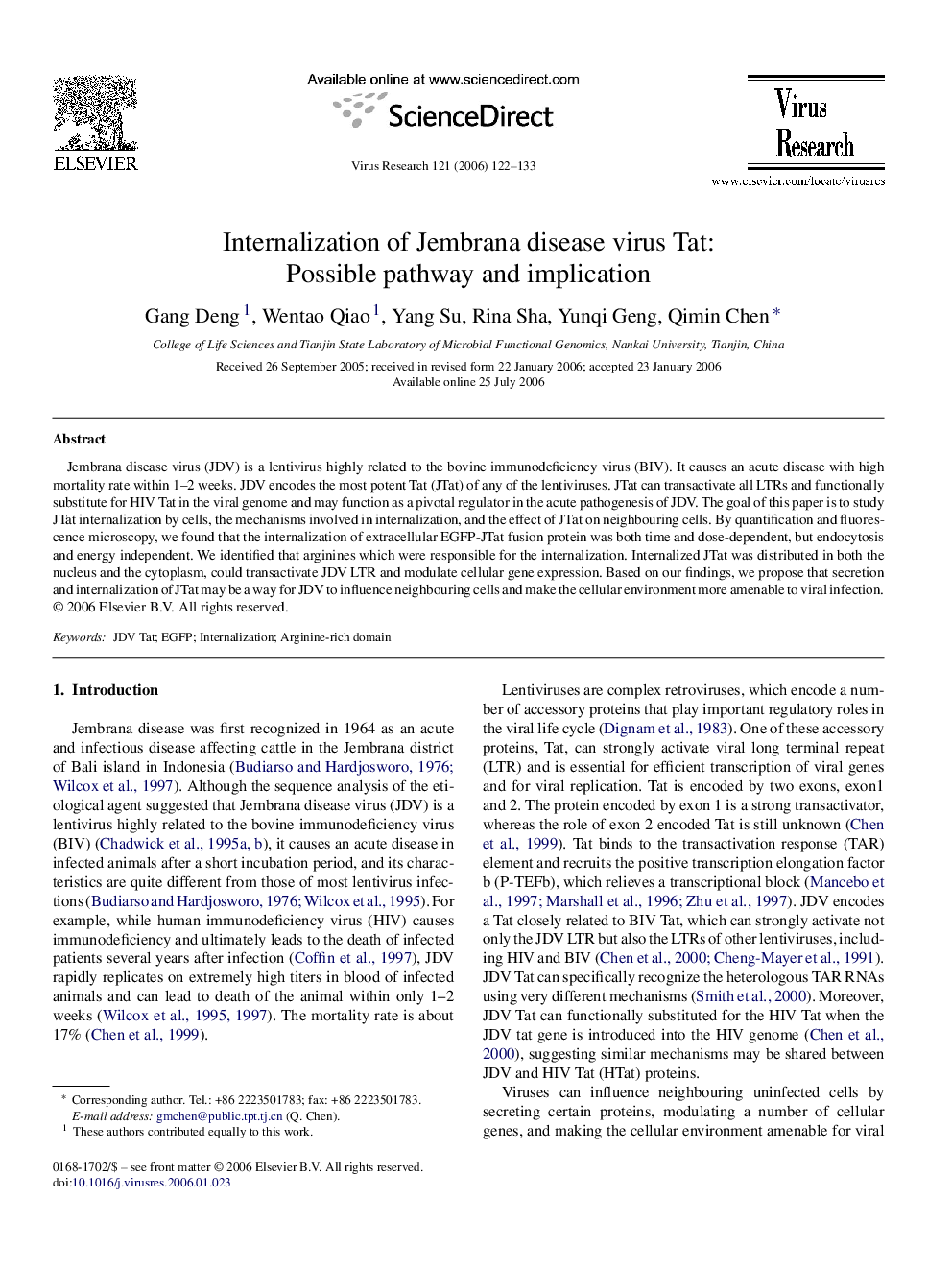| Article ID | Journal | Published Year | Pages | File Type |
|---|---|---|---|---|
| 3431054 | Virus Research | 2006 | 12 Pages |
Abstract
Jembrana disease virus (JDV) is a lentivirus highly related to the bovine immunodeficiency virus (BIV). It causes an acute disease with high mortality rate within 1-2 weeks. JDV encodes the most potent Tat (JTat) of any of the lentiviruses. JTat can transactivate all LTRs and functionally substitute for HIV Tat in the viral genome and may function as a pivotal regulator in the acute pathogenesis of JDV. The goal of this paper is to study JTat internalization by cells, the mechanisms involved in internalization, and the effect of JTat on neighbouring cells. By quantification and fluorescence microscopy, we found that the internalization of extracellular EGFP-JTat fusion protein was both time and dose-dependent, but endocytosis and energy independent. We identified that arginines which were responsible for the internalization. Internalized JTat was distributed in both the nucleus and the cytoplasm, could transactivate JDV LTR and modulate cellular gene expression. Based on our findings, we propose that secretion and internalization of JTat may be a way for JDV to influence neighbouring cells and make the cellular environment more amenable to viral infection.
Keywords
Related Topics
Life Sciences
Immunology and Microbiology
Virology
Authors
Gang Deng, Wentao Qiao, Yang Su, Rina Sha, Yunqi Geng, Qimin Chen,
